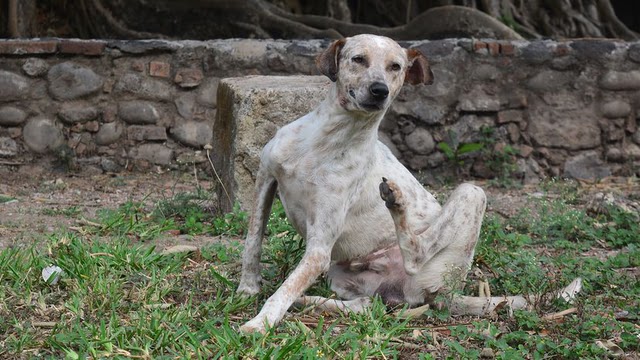Quck answer
Yes, dogs can get poison ivy. They can develop a rash and itchy skin if exposed to the plant’s oils. Symptoms may include redness, swelling, and bumps on the skin. If you suspect your dog has come into contact with poison ivy, wash the affected area with soap and water immediately. Consult a veterinarian for treatment options, which may include topical creams or oral medication. It is important to keep your dog away from areas with poison ivy to prevent exposure.
Pets

Have you ever noticed your furry companion incessantly scratching or biting itself, appearing to be extremely uncomfortable? It’s possible that it may have come into contact with poison ivy, as dogs can contract it just like humans.
For those who enjoy spending time outdoors with their dogs, it’s important to be aware that they can be affected by poison ivy, poison oak, and poison sumac. These plants contain a sticky oil called urushiol, which is absorbed by the skin and causes contact dermatitis, otherwise known as an itchy rash. Although dogs may have a protective coat, it’s still possible for urushiol to reach their skin, particularly on their bellies or underneath their legs. While it’s not common for dogs to develop a rash, they can spread the oil to their owners.
Leaves of Three, Leave Them Be
Poison ivy, poison oak, and poison sumac can be found in wooded areas throughout North America. The slightest touch of urushiol can cause an allergic reaction in those who are sensitive to it. To minimize the risk of exposure to dogs and humans, it’s important to avoid these plants altogether.
Tubby Time
After spending time outdoors, it’s recommended to give your dog a bath with warm water and an oatmeal soap or anti-itch dog shampoo to rinse off any urushiol that may be on their coat. It’s important to wear gloves while bathing your dog to avoid exposure to the oil. Keep an eye on your dog’s skin after bathing to ensure that it’s not irritated or inflamed. If your dog appears to be uncomfortable or itchy, contact your veterinarian for advice on how to proceed. They may recommend a topical hydrocortisone cream or Benadryl, but it’s important to consult with them before administering any medication.
To prevent the spread of urushiol, it’s important to wash anything that may have come into contact with your dog, including clothing, towels, and bath rugs. Urushiol can remain on fabric and transfer easily to anyone who touches it.
Now That’s Interesting
About 85 percent of people in the United States are allergic to urushiol, making it the most common allergic reaction in the country. It affects approximately 50 million Americans each year, and it’s possible to develop an allergy to it at any age, even if you’ve never had a reaction before.
FAQ
1. Can dogs get poison ivy?
Yes, dogs can get poison ivy. Poison ivy is a type of plant that contains oil called urushiol, which causes an allergic reaction in most people and animals. Dogs can get this oil on their fur or skin by rubbing against the plant or coming into contact with something that has the oil on it. The symptoms of poison ivy in dogs are similar to those in humans and include redness, itching, and swelling. It can also cause blisters and sores in severe cases.
2. How do I know if my dog has poison ivy?
If your dog has been in contact with poison ivy, you may notice redness, itching, or swelling on their skin or fur. They may also be scratching or biting at the affected area. If your dog has come into contact with poison ivy, it’s important to wash them thoroughly with soap and water to remove the oil from their skin and fur. If your dog is showing symptoms of poison ivy, it’s best to take them to a veterinarian for treatment.
3. Can I get poison ivy from my dog?
It’s possible to get poison ivy from your dog if they have the oil on their fur or skin and you come into contact with it. If you suspect that your dog has been in contact with poison ivy, it’s important to wash them thoroughly with soap and water to remove the oil from their skin and fur. It’s also a good idea to wear gloves and long sleeves when handling your dog after they’ve been in contact with poison ivy.
4. How can I prevent my dog from getting poison ivy?
The best way to prevent your dog from getting poison ivy is to keep them away from areas where the plant grows. If you do take your dog into an area where poison ivy is present, make sure to keep them on a leash and avoid letting them rub against any plants. If you suspect that your dog has come into contact with poison ivy, wash them thoroughly with soap and water as soon as possible to remove the oil from their skin and fur.
5. What should I do if my dog has a severe reaction to poison ivy?
If your dog has a severe reaction to poison ivy, it’s important to take them to a veterinarian as soon as possible. Your veterinarian may recommend a course of treatment, which may include medication to reduce inflammation and itching, as well as antibiotics if the affected area has become infected. In severe cases, your veterinarian may recommend hospitalization to monitor your dog’s condition and provide supportive care.





Leave a Reply